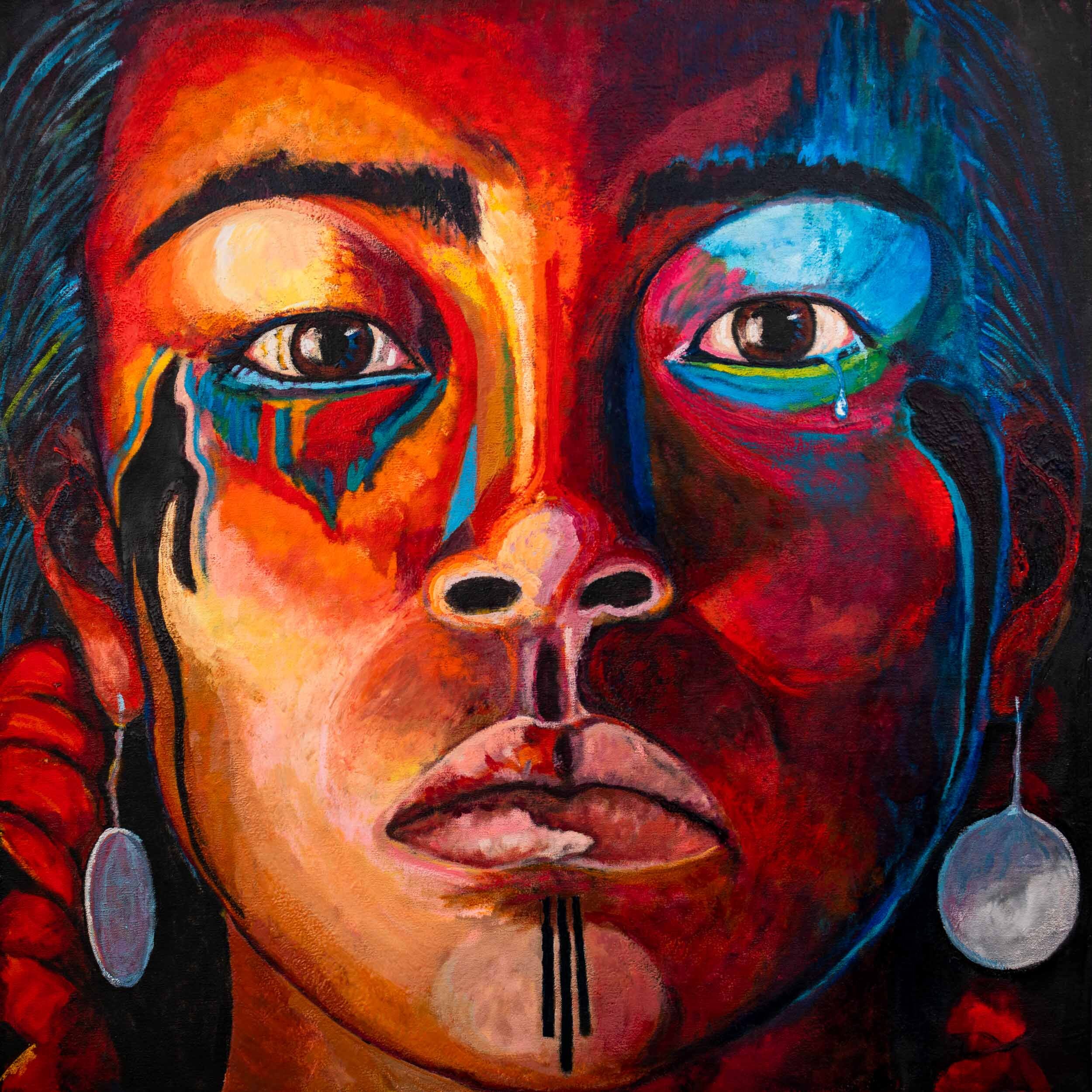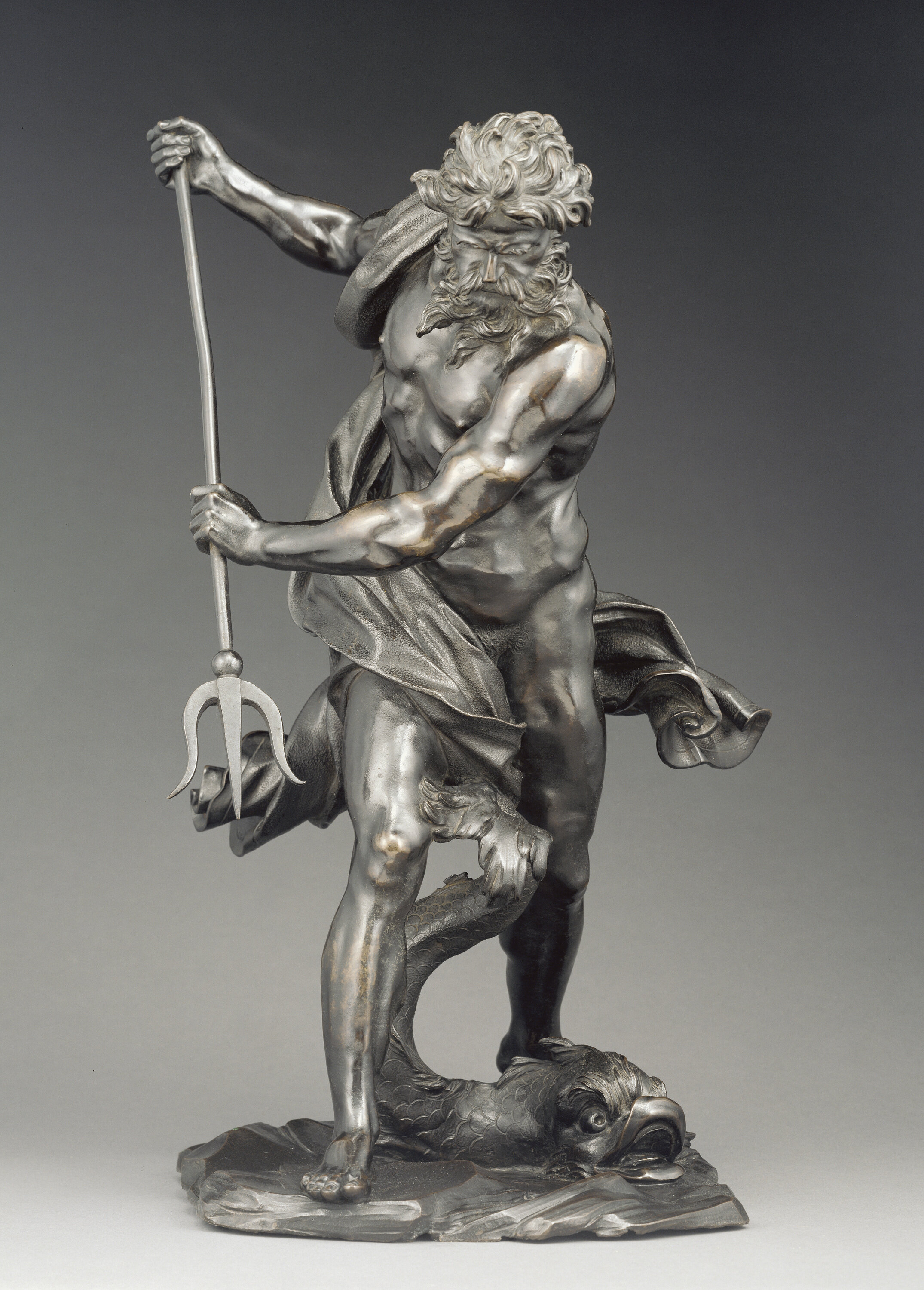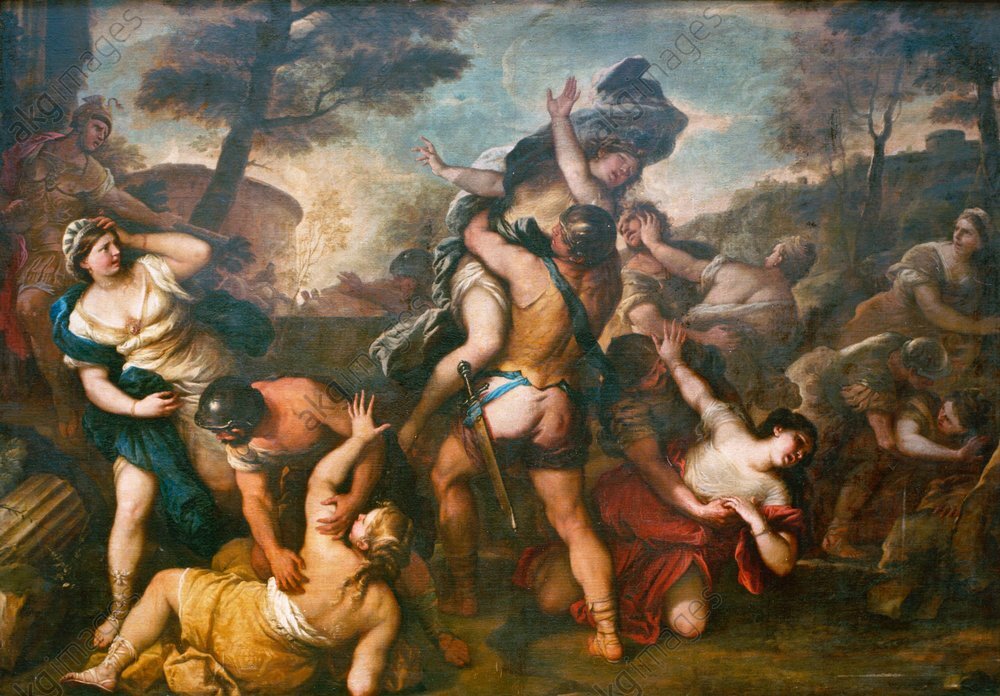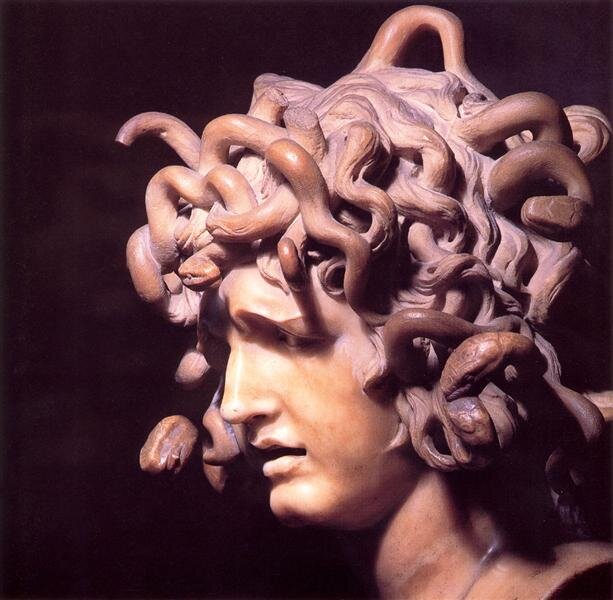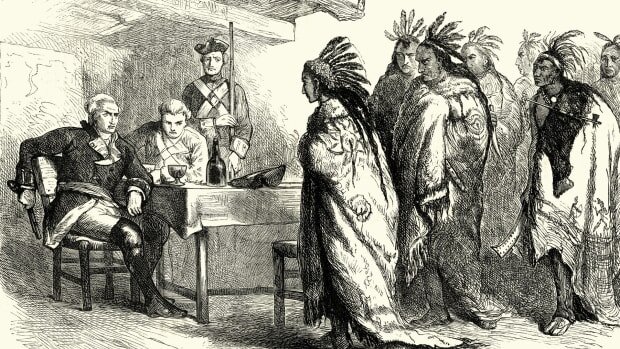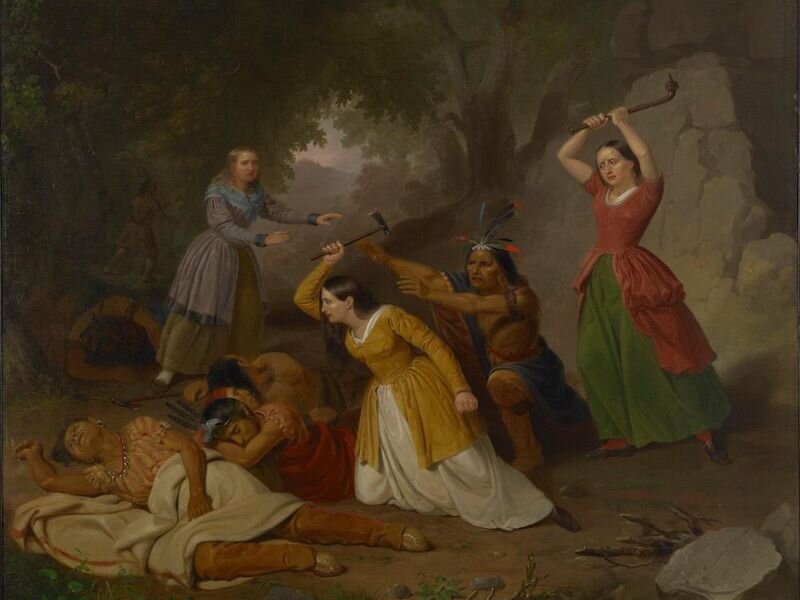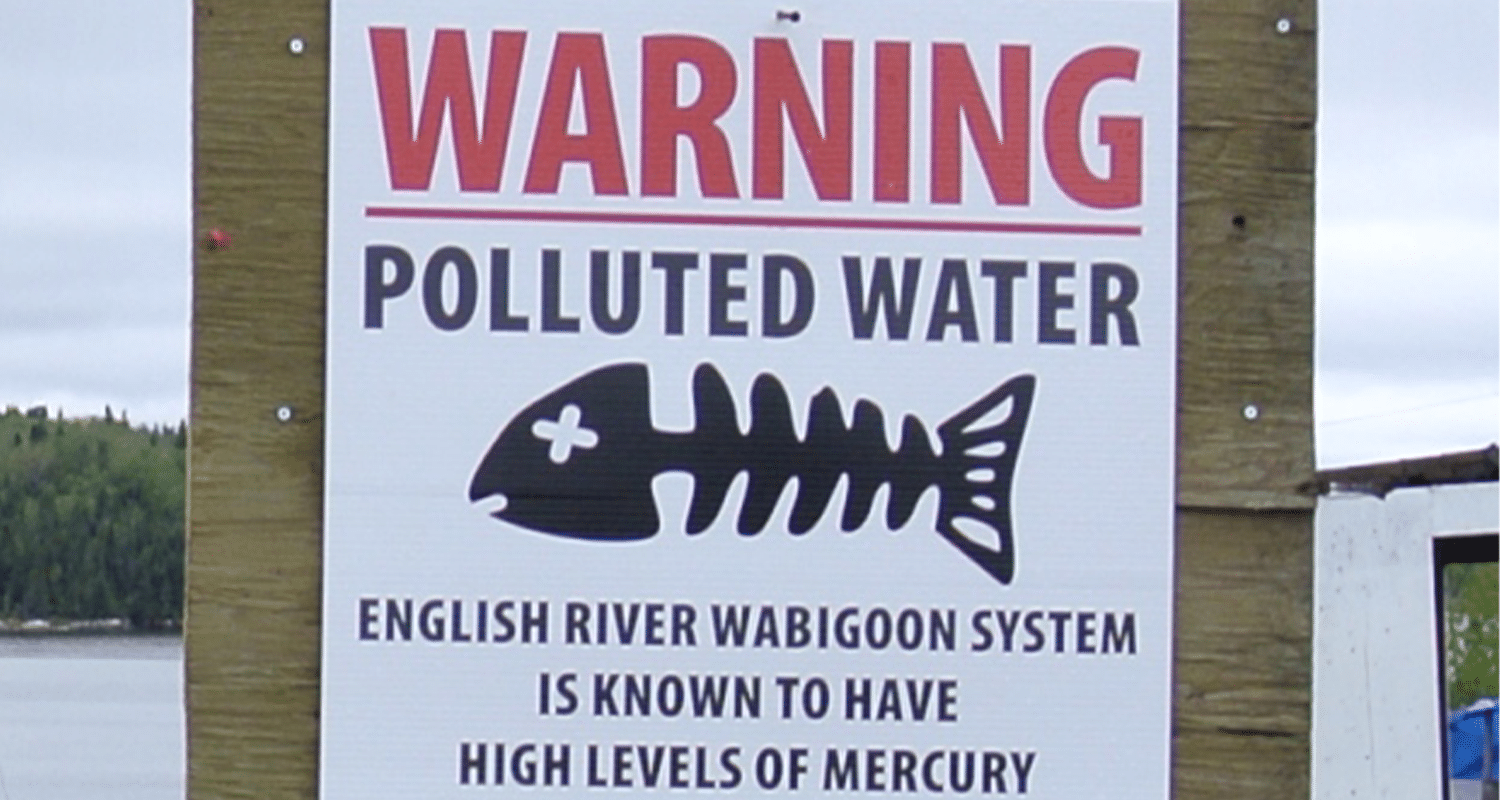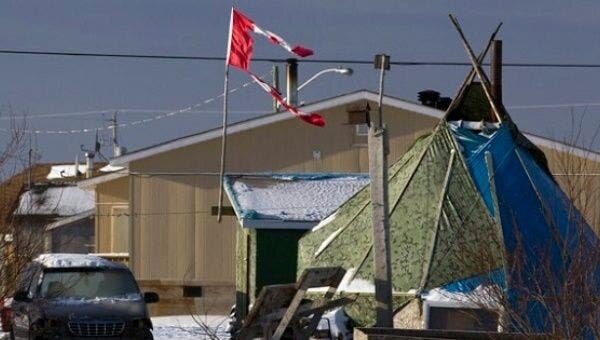medusa’s rage
impressions of Autumn Peltier
Medusa is known as the terrifying woman with snakes for hair, whose sheer rage can turn a person to stone just for looking at her.
What made Medusa so angry?
Because she was not consulted and her rights were denied. Because she was wrenched from her spiritual path, raped, blamed and destroyed.
Medusa was following a spiritual path as a priestess in Athena's temple.
Indigenous people too were following their own spiritual ways when the colonialists arrived on the continent.
Autumn Peltier, an Indigenous environmental activist, has been drawing global attention to the lack of safe drinking water in numerous Indigenous communities across Canada.
“When there is no clean water left, our tears will fall as oil.”
Artist Amanta Scott beside encaustic painting Medusa’s Rage, Impressions of Autumn Peltier, 2021
Initially Medusa was stunningly gorgeous, far prettier than her other two sisters who apparently were real monsters.
They say Medusa’s pretty face and long beautiful hair caught the eyes of a lot of men.
So what happened?
Aspecta Medusa, Dante Gabriel Rosetti, 1867
The story goes that one day Medusa was helping out in the temple of Athena . . .
Priestesses of the Temple of Athena, photo © Brian Morley
Maybe she was setting out the altar, or practicing some music or just saying her prayers . . . much like a kid in residential school.
She glanced up and found the priest right there staring at her. . . he was way too close.
She tried to leave but he was blocking the entrance.
The priest or Poseidon, god of the sea, pounced on her and raped her, right then and there — on the steps of the temple.
Neptune, Gian Lorenzo Bernini, c.1622, Borghese Gallery, Rome
Being raped is bad enough, being violated by someone in a position of power really messes you up. Who’s gonna listen or believe you?
How long has it taken us to hear the voices of the residential school survivors or the children of the Sixties Scoop?
Paintings and sculptures of the story The Rape of the Sabine Women depict some of the horror of colonialism and echo the history of First Nations people in Canada.
The Rape of the Sabine Women, Luca Giordano, 1634–1705
Anyway, Athena is furious: what happened to Medusa is inconsequential. Athena’s sacred temple has been desecrated!
Pallas Athena, Rembrandt, c. 1655, Calouste Gulbenkian Museum
So no one cared what happened to Medusa or how she was feeling. Just as for years it seems that no one has cared about what happened to First Nations people.
With Medusa, they said, she must have led him on somehow, men were always flirting with her. Another rumour was that she might have been foolish enough to think that she was more beautiful than Athena... Well not anymore, that’s for sure!
Athena transforms Medusa into a hideous Gorgon monster with piercing eyes and her long beautiful hair morphs into a coil of writhing serpents.
Think about it. If you’re a kid and you’ve been violated by someone in a position of authority— where do you go?
Maybe you take to the streets. And after a time you don’t look so hot. You probably start looking pretty rough.
Now the mere sight of Medusa is sufficient to turn a man to stone.
Well that’s what you get when you blame the victim!
How often has your heart turned to stone as you’ve walked past a street person?
Medusa is then exiled, banished to a reservation or sent to a remote island at the end of the earth where the only ones who will come to visit will be the men who want to kill her.
Native American Getty images
One day Perseus, one of the greatest Greek heroes, is sent on a mission to bring back the head of Medusa to the King — a bit like General William T Sherman sent to kill all the buffalo and the Cree who depended upon them.
Equipped with winged sandals, special sack for her head and a shield, and maybe some poisoned blankets just in case, Perseus, or whoever it was, creeps up on her when she is asleep — kinda like Hanna Duston, that righteous woman so completely oblivious to the suffering of the New England First Nations people; thinking only of herself and her own grief.
Junius Brutus Stearns, "Hannah Duston Killing the Indians" (1847). Oil on canvas. (Colby College Museum of Art, Gift of R. Chase Lasbury and Sally Nan Lasbury.)
Using Athena’s shield as a mirror so as to avoid looking at Medusa directly — Perseus chops off her head. (In parallel versions of the story a sleeping family gets scalped.)
Perseus with the Head of Medusa, Benvenuto Cellini, 1554-1555, Loggia dei Lanzi, Florence
Perseo vencedor de Medusa, Giordano, Luca y Taller1699 - 1702. Óleo sobre lienzo, 223 x 91 cm , Museo del Prado
The only way to conquer Medusa is to reflect on her by way of a mirror.
Think about this:
We can only confront our demons if we reflect on ourselves first.
Issues don’t go away just because we cut them down.
One of the kindest men I ever met survived relocation, residential school and being raped in jail. He was a beautiful soul.
Many of my First Nations friends suffer from ill health, poor living conditions, life-long PTSD and wrestle with addictions.
What have we done as a country? We have to address it.
If we believe in any possibility for reconciliation and healing we have to face some awful truths.
From the blood that spurted from Medusa’s neck sprang Chrysaor and Pegasus, her two sons.
Medusa’s severed head which retained the power of turning to stone all who looked upon it, was given to Athena who placed it on her shield.
Even in death, Medusa’s rage is powerful enough to turn any opponent to stone.
The Birth of Pegasus and Chrysaor, Edward Coley Burne-Jones, 1876, Southampton City Art Gallery.
water in Canada
Canada is a beautiful country. Did you know that Canada has two million lakes and rivers? That accounts for 20 per cent of the world’s freshwater! Canada also has 200 species of freshwater fish. But did you know that one third of these are now considered at-risk?
Huge numbers of aquatic wildlife are being stopped dead in their tracks en route following their migratory path. Dams, hydrodams, culverts, levees and road crossings have been creating barriers for wildlife species for decades.
For many years I lived on Lake Scugog. Once a week or so I would make the trip down to Toronto passing through beautiful acres of farmland with rich dark arable soil and lovely lush forests in the Oak Ridges Moraine, a glacial landform unique to southern Ontario. Known as the “rain barrel of southern Ontario”, the Oak Ridges Moraine is also considered the water ‘heart’ of Ontario’s Greenbelt.
Lake Scugog
Here, sand and gravel from glacial deposits filter water which fills aquifers. These underground water systems provide the headwaters to over 80 rivers and streams flowing into Lake Ontario and Lake Simcoe. The Greenbelt helps to clean and filter the water and air, and reduce flood risks; as well as providing greenspace and a home to wildlife.
Over the years I watched in horror and dismay as forests and fields in this beautiful region were ripped up and destroyed — and replaced with parking lots, strip malls, monster-homes, and new communities. It was horrible to witness.
Logged-over Hillside, c. 1940
oil on paper mounted on plywood
59.6 cm x 87.0 cm
National Gallery of Canada, Ottawa, Purchased 1947
4861
Terms and Conditions
© Vancouver Art Gallery, all rights reserved
Development is the biggest threat to the health of water systems — causing multiple issues with serious consequences – impermeable surfaces and loss of forest cover in the watershed present huge challenges for the rivers. Pollution flows more rapidly into our water systems from paved surfaces during storms. Decreasing groundwater recharge affects the base-rate flow of rivers and can cause river levels to reach dangerously low levels for many species during drier months; increasing water temperatures affect trout and salmon that rely on coldwater streams, as well as other fish species requiring specific temperatures. As well, plastic and other pollutants are piling up in our landfills and frequently end up in our rivers and oceans — causing major damage to the habitat and wildlife living there.
boil water advisories
There are just over 600 First Nation communities in Canada.
Emily Carr, Indian Village: Alert Bay (c. 1912) oil on canvas, 63.5 x 81.3 cm, Beaverbrook Art Gallery: Gift of Lord Beaverbrook
Did you know that at any given time one in five of these communities are under a boil water advisory? Bear in mind that a single water advisory can mean as many as 5,000 people lack access to safe, clean water — in Canada.
Consider this report released by CBC: https://youtu.be/7zecKWmLQrE
There are three classes of water advisories: boil water, do not consume and do not use.
The most common is a boil water advisory, in which communities are told they should boil all water for at least one minute before drinking, brushing their teeth or cooking and that they shouldn’t use tap water to bathe infants, toddlers or the elderly.
Some of the advisories are short in duration, while some communities have endured long-term drinking water advisories for over twenty years. Some advisories are so old, that in some communities entire generations have grown up under various degrees of drinking water advisories.
The Shoal Lake 40 First Nation and the Neskantaga First Nation, in northern Ontario have had drinking water advisories in place since 1995 and 1996 respectively. That means one full generation has grown up under a drinking water advisory and a second generation is now growing up having never turned on the tap for a glass of water or a bath.
Many Indigenous communities are effectively living in Third-World conditions in a First-World country.
Imagine never being able to drink or bathe in the water that you have access to.
How does that make you feel?
Woman in Bath, Roy Lichtenstein, 1963, Oil and Magna on canvas. 173.3 x 173.3 cm, Museo Nacional Thyssen-Bornemisza, Madrid, Inv. no. 648 (1978.92) Room 48 © The Estate of Roy Lichtenstein, VEGAP, Madrid
73 per cent of First Nations’ water systems are at high or medium risk of contamination.
Why?
The reason why water on First Nations isn’t potable varies — from the water’s origin which may be contaminated, to the treatment system, to the pipes through which it flows, to how remote the community is.
Many of the on-reserve water systems have not been updated to meet the demands of a growing population. Additional on-reserve housing units cannot be added without upgrades to the water and wastewater infrastructure. Overcrowding in on-reserve housing is common on many reserves which places extra strain on inadequate sanitation systems.
Exposure to waterborne contaminants such as e. coli have health impacts that include gastrointestinal disorders, the increased risk of cancer, and recurring skin infections. Struggling under long-term drinking water advisories leaves people frustrated, scared, and desperate, not to mention exhausted from caring for family members, young and old, in crowded, unhealthy housing. There is a social cost as well. Bathing is limited and clean laundry is a challenge.
Woman Ironing, Picasso, 1901-4, The Solomon Guggenheim Foundation
“As of October 2019, there are 58 Indigenous communities across Canada under long term drinking water advisories. Communities that have no running water at all were not considered when this number was tallied. For example, 10% of First Nation communities have no water services. Across Canada, there are approximately 1800 homes on reserve lacking water service and 1777 that are lacking any type of sewage service.
A considerable number of these communities have been under a water advisory for multiple consecutive years. Neskantaga, a First Nation community in north western Ontario has been on a long term water advisory since 1995. Other communities include Grassy Narrows, Chippewa of Georgina Island, Eabametoong, and Nibinamik, just to name a few.”
“All Canadians need to be aware of this issue and the severity of it. ”
how did this happen?
When Parliament passed the Indian Act in 1876, it established the reserve system that Canadians know now. In conjunction with existing treaties made between the government and different First Nations, the act established which tracts of land would be for First Nations people so that settlers could set up farms.
The aim of Sir John A Macdonald’s gov’t was to do away with the tribal system and to starve and destroy Indigenous peoples in all respects.
An 1888 cartoon from the now-defunct Grip magazine showing Macdonald and Indian Commissioner Edgar Dewdney callously ignoring starving Cree. Photo via WIKIMEDIA COMMONS
The aim of the Indian Act was to force First Nations people’s assimilation into society and make them Canadian by stripping them of their land, their culture, their rights, their autonomy and — as seen through the residential school system and the ’60s Scoop — their children.
Indian Family, Olive Rush, c.1949, image © Acosta-Strong Fine Art
The social, political, economic and spiritual life of First Nations people here on Turtle Island was attacked and almost destroyed.
Consider this video released by The National Post: https://youtu.be/-SFcgtcUTjs
Did you know that reserve land is owned and under the jurisdiction of the federal government? This means that the federal government is responsible for services and infrastructures on reserves; whereas for the rest of the country, water is governed by provincial and municipal governments.
When the federal government set up the reservation system they didn’t bother to put in roads, housing or functioning infrastructure because they hoped Indigenous people were just going to die out . . . The government didn’t plan for them to still be here. The fact that they are is a testimony to their resilience and strength as a people.
A tattered Canadian flag flies over a teepee in Attawapiskat, Ontario. | Photo: Reuters
Indigenous people today
Today Indigenous people have poorer health, lower levels of education, inadequate housing and crowded living conditions, lower income levels, higher rates of unemployment, higher levels of incarceration, higher death rates among children and youth due to unintentional injuries, and higher rates of suicide than all others in Canada.
One in five Aboriginal people live in poorly constructed, overcrowded houses that are seriously in need of major repairs. Black mould is a huge problem. This is a significant health concern.
Did you know that nearly half of the youth incarcerated across Canada are Indigenous?
Suicide rates are five to seven times higher for First Nations youth than for non-Aboriginal youth, and for Inuit youth, the rate is among the highest in the world - 11 times the national average. Suicide and self-inflicted injuries are the leading causes of death for First Nations youth and adults up to 44 years of age.
Mexican Girl Dying, Thomas Crawford, 1848, Marble, Bequest of Annette W. W. Hicks-Lord, 1896, Metropolitan Museum of Art
Why do people take their own lives? Because when you hurt so much inside, self-harm feels like the only way to release or take control of the pain from outside sources. I know. I’ve been there.
Charles Cary Rumsey (American, 1879-1922). The Dying Indian, 1900s. Bronze, 113 x 101 x 31 in. (287 x 256.5 x 78.7 cm). Brooklyn Museum, Gift of Mrs. Charles Cary Rumsey, 30.917. Creative Commons-BY (Photo: Brooklyn Museum, 30.917_view1_bw.jpg)
When your body and sacred spaces are violated, when your rights are denied, when your values, priorities and wishes are ignored or overridden, you are in the same position as Medusa when she encountered Poseidon in the Temple.
Think about the protests going on today. All that rage. All that pain. And with good reason!
The World Health Organization's investigation into health determinants now recognizes European colonization as a common and fundamental underlying determinant of Indigenous health. The lack of clean, safe drinking water in First Nations is one of the greatest violations of the UN-recognized human rights to water and sanitation.
Josephine Mandamin, an environmental activist from Wikwemikong First Nation, Ontario, started the water walking movement when she co-founded Mother Earth Water Walk in 2003. Since that initial walk, Josephine walked about 170,000 kilometres around all of the Great Lakes to raise awareness about water pollution. Her final walk was in 2017 with the Great Lakes Water Walk.
Autumn Peltier
Autumn Peltier (b. 2004) is Anishinaabe-kwe and a member of the Unceded Territory Wiikwemikong First Nation living on Lake Huron — one of the largest freshwater lakes on the planet.
Autumn Peltier has been drawing global attention to the lack of safe drinking water in numerous Indigenous communities across Canada. Peltier's quest to protect water started when she was eight years old when she visited a community under a boil water advisory. Since then, she has had meetings on the importance of clean water with the Prime Minister and the Assembly of First Nations.
She is internationally recognized as advocate for the universal right to clean drinking water, raising awareness towards water rights and ensuring Indigenous communities around the world have access to clean, safe and reliable drinking water.
I first became aware of Autumn Peltier when, at a meeting of the Assembly of First Nations, she presented Canadian Prime Minister Justin Trudeau with a copper water pot and confronted him on his record on water protection, and his support for pipelines —telling him: "I am very unhappy with the choices you made".
I fell in love with her when, in response to his seemingly condescending remark that he would “try to do better”, she replied: “I’ll hold you to it, because I’m going to live a long time.”
Autumn Peltier appeals to Prime Minister Trudeau to Protect Canada’s Water
Her passion and determination inspired me to paint my impressions of her.
I love that Autumn is actively reclaiming the traditional role of Indigenous women as strong, wise and capable.
Like the priestesses in Athena’s temple, before the America’s were colonized, Indigenous women were highly respected and consulted on important political and social issues pertaining to the community, including the appointing or deposing of chiefs.
In 2018, at the age of thirteen, Peltier addressed world leaders at the UN General Assembly on the issue of water protection.
In April, 2019 Autumn Peltier was named the chief water commissioner by the Anishinabek Nation, a position previously held by her great-aunt Josephine Mandamin.
Whether we see her as a water protector, a "water warrior", or a priestess from the past, Autumn Peltier is here to remind us face our demons, acknowledge the past, and move forward into a better future.
photo by Linda Roy
Autumn Peltier
“From the realms of the human world, the sky dwellers, the water beings, forest creatures and all other forms of life, the beautiful Mother Earth gives birth to, nurtures and sustains all life. Mother Earth provides us with our food and clean water sources. She bestows us with materials for our homes, clothes and tools. She provides all life with raw materials for our industry, ingenuity and progress. She is the basis of who we are as “real human beings” that include our languages, our cultures, our knowledge and wisdom to know how to conduct ourselves in a good way. If we listen from the place of connection to the Spirit That Lives in All Things, Mother Earth teaches what we need to know to take care of her and all her children. All are provided by our mother, the Earth.
Indigenous peoples are caretakers of Mother Earth and realize and respect her gifts of water, air and fire. First Nations peoples’ have a special relationship with the earth and all living things in it. This relationship is based on a profound spiritual connection to Mother Earth that guided indigenous peoples to practice reverence, humility and reciprocity. It is also based on the subsistence needs and values extending back thousands of years. Hunting, gathering, and fishing to secure food includes harvesting food for self, family, the elderly, widows, the community, and for ceremonial purposes. Everything is taken and used with the understanding that we take only what we need, and we must use great care and be aware of how we take and how much of it so that future generations will not be put in peril.
Environmental degradation affects the health and well-being of not only the First Nations people but all peoples of North America and the world in many ways. First Nations peoples do not yet know all the ways harmful man-made substances affects fish, wildlife, habitat, and human beings. However, First Nations people are aware that pollutants and contaminants, especially those originating from industrial development, have negative consequences for the health of all living things, including humans. Industrial contamination and disruption of wildlife habitat combine to reduce the supply and purity of traditional foods and herbal medicines. Finally, degradation erodes the quality of life dependent on the purity of the land, water, flora and fauna, and further affects Indigenous people’s cultures, languages and spiritual health and well-being.
First Nations peoples can demonstrate how, in asserting their land use and rights, economic initiatives can be both profitable and sustainable for future generations. First Nation traditional knowledge has provided our people with the tools to care for Mother Earth and our sacred sites. This knowledge can be shared with industry for the betterment and survival of all peoples.”
References
- New Larousse Encyclopedia of Mythology, Hamlyn Publishing Group Ltd., New York, 1959
- Ancient Mirrors of Womanhood, Merlin Stone, Beacon Press, Boston, 1984
- When God Was A Woman, Merlin Stone, Harvest Edition, 1976
- The Civilization of the Goddess, The World of Old Europe, Marija Gimbutas, HarperCollins Publishers, 1991
- The Language of the Goddess, Marija Gimbutas, HarperRow publishers, San Francisco, 1989
- https://www.legendsofamerica.com/ah-williamsherman/
- https://thesarniajournal.ca/painter-emily-carr-a-canadian-icon/
- https://truenorthaid.ca/indigenous-water-challenges/
- https://nationalpost.com/news/canada/here-is-what-sir-john-a-macdonald-did-to-indigenous-people
- https://www.youtube.com/watch?v=7zecKWmLQrE
- https://www.guggenheim.org/conservation/picassos-woman-ironing
- https://www.santafenewmexican.com/pasatiempo/art/a-hoosier-in-santa-fe-artist-olive-rush/article_41b7fc28-9b20-5ad0-885f-817567ef7622.html
- https://www.metmuseum.org/art/collection/search/10575
- https://www.brooklynmuseum.org/opencollection/objects/30237
- https://pnsn.org/outreach/native-american-stories/native-american-stories-overview
- https://www.telesurenglish.net/news/Canada-Indigenous-Children-Twice-as-Likely-to-Live-in-Poverty-20160530-0003.html
- https://www.afn.ca/Home/
- https://www.watertoday.ca/map-graphic.asp
- https://canadians.org/fn-water
